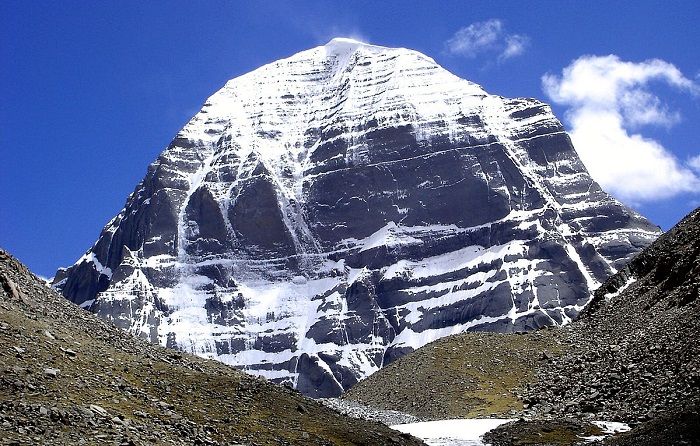
Image Credit : https://en.wikipedia.org/wiki/Mount_Kailash
Mount Kailash is a sacred pilgrimage place of Asia and lies in the South-West of Tibetan autonomous region of China-Nagri, towering 6714 meters (22022 ft) above the Tibetan Plateau. Mt Kailash is a sacred and venerated pilgrimage site for Buddhists, Hindus and Jains. According to Hindu mythology Mt. Kailash is the adobe of Lord Shiva. Legends have it that immortal Shiva lives on the top of Kailash Parbat, practicing yogic austerities. Making joyous and love with his divine companion Parvati.
In Hindu religion it is believed that to make the arduous pilgrimage of Kailash and have Darshan of Shiva's adobe is to attain release from the clutches of ignorance and disillusions. The Jains call the Kailash Mountain as Astapada. They believe that 'Risabha Dev', the first of the twenty-four Tirthankars attained liberation at the Kailash Mountain.
The followers of Bon religion (Tibet's pre-Buddhist Shamanistic religion) call the Kailash Mountain as Sipai Man (Sky Goddess). In addition to this Bon myths regard Tise as the site of the 12th century battle of sorcery between the Buddhist Saga Milarepa and the Bon-Shaman Naro-Bon-Chug. Though Buddha is believed to have visited Mount Kailash in the 5th century BC, the religion of Buddhism only entered Tibet via Nepal and India in the 7th century AD.
Tibetan Buddhists call the Kailash Mountain as Kang Rimpoche ("the precious one of Glacial Snow") and look upon it as the abode of Demchog (also known as Chakra Samvara) and his companion, Dorsephagmo. Three hills rising near Kang Rimpoche are believed to be the homes of the Bodhisattvas Manjushree, Vajrapani and Avalokiteshvara.
The pilgrimage (journey) to the Mt. Kailash is tough and circumnutating the sacred peak is even more arduous. The Kora or Parikrama around Mount Kailash usually takes three days. The Buddhists and the Hindus make round of the peak clockwise while the Bons route it anticlockwise.



